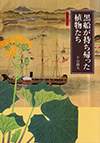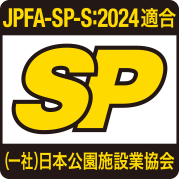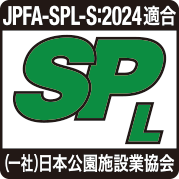Abstract
Although it is well known that the visit of American “Black Ships” to Japan under the command of the Commodore Perry in 1857 resulted in the termination of her seclusion for some two decades, the fact that the plant gathering in Japan was included in the purposes of this exploration has hardly been known outside systematic botanical communities. The Black Ships under the name of the United States North Pacific Exploring Expedition made plant collecting twice in Japan, and the plant specimens made during these expeditions are now housed in the herbaria of the Harvard University, The New York Botanical Garden, the United States National Herbarium (Smithsonian Institution) and a few other institutions.
The first botanizing attempt was made in 1853 at Uraga (Kanagawa Pref.), Yokohama, Shimoda (Shizuoka Pref.) and Hakodate (Hokkaido) by Mr. S. Wells Williams and Dr. James Morrow, then officials at the American Consulate at Macao, China, who joined the Commodore Perry's expedition party in Hong Kong. The Japanese collections were brought to Harvard University for study by Dr. Asa Gray, then professor of botany at the university. The collection consisted of 353 specimens, of which 34 species were regarded by Gray as new. Besides the new species, identifying those specimens Gray had reaffirmed his assumption that there was a great similarity between the floras of eastern North America and Japan, the finding which motivated the plant collecting in a much larger scale in the second expedition of Black Ships.
The Table 1 shows the sailing routes and dates of the second expedition of Black Ships under the command of the Commanders Ringgold and Rodgers in 1854 and 1855. Two ships, the U.S.S.Vincennes and the U.S.S.Hancock, were used for plant exploration, and Dr. Charles Wright and his field assistant, Mr. James Small, on board Vincennes and Hancock respectively, botanized in the Ryukyu Archipelago (Okinawa, Amami Oshima Is., Kikaigashima Is., Tanegashima Is. and the Pescadores), Kagoshima Bay of Kyushu, Shimoda of the Main Island and Hakodate of Hokkaido. The collection of this second expedition is not only much bigger in the number of specimens than in the first collection but also covers more places of Japan from subtropical Ryukyu Archipelago to subarctic northernmost part of Hokkaido. Gray's studies on these rich collections have resulted in the monumental opus (Gray 1859), which discussed for the first time about the peculiar floristic link between the temperate North America and eastern Asia, enumerating some 580 taxa showing such phytogeographic disjunct distribution (see the next chapter of this report for these details).
In addition to the first and the main set of these Japanese collections an excellent duplicate set of the collection is kept in the herbarium of The New York Botanical Garden as mentioned above. I suspect that this New York set might possibly be the second set of the collection because of the close academic relationship between Prof. Asa Gray and Dr. John Torrey (associated with The New York Botanical Garden at that time). As a matter of fact, I see that the New York sheets are often more complete and in much better condition than the corresponding Harvard sheets. I have updated the determinations of these collections based mainly on the New York sheets in frequent consultation with the master sheets as is seen in the annotated catalogue of these specimens in the following chapter of this report.
『黒船が持ち帰った植物たち』コンテンツ一覧▼ 目次(青字)をクリックすると、各文をご覧いただけます
発刊に寄せて
刊行にあたって
はしがき
1.黒船による日本及びその付近での植物採集
何時,何処で,誰が?
エイサ・グレイ教授の研究
昭和天皇による黒船採集植物の御研究
Plant collecting in Japan and its adjoining territories by the Black Ships (Abstract)
2.東アジアと北アメリカの間の植物の隔離分布について
東亜と北米の間の植物の不連続分布の4型
東亜・北米間の隔離分布の由来
東亜と北米の間で隔離分布する植物の生態
隔離分布している植物の分化
Disjunct distribution of flowering plants between eastern Asia and North America (A summary account)
3.米国北太平洋探検隊採集の日本植物の図録
An annotated catalogue of plant specimens collected in Japan by the U. S. North Pacific Exploring Expeditions(1853-1855), based mainly on the set housed in The New York Botanical Garden, U.S.A.
Ⅰタイプ標本 (Type materials)
Ⅱ琉球列島 (The Ryukyus)
Ⅲ九州 (Kyushu)
Ⅳ小笠原 (The Bonin Isls.)
V下田・横浜 (Shimoda and Yokohama)
VI北海道とその周辺 (Hokkaido and its surrounding regions)
書籍詳細
-
小山鐵夫 著 B5判 / 上製 / 98頁(オールカラー) /
定価1,572円(本体1,429+税)/ ISBN4-900358-41-X
〔花の美術館〕カテゴリリンク
- 第19回 小山鐡夫追悼記念号『黒船が持ち帰った植物たち』より
- 第18回 小山鐡夫追悼記念号『植物園の話』より
- 第17回 『MAKINO 80』東京植物同好会・牧野植物同好会八十周年記念誌
- 第16回 ハマナスの語源を探る
- 第15回 金井弘夫追悼記念号『金井弘夫著作集 植物・探検・書評』より
- 第14回 『花のある風景』
- 第13回 坂嵜信之追悼記念号『日本で育つ・熱帯花木植栽事典』より
- 第12回 楽しい花観察108選『不思議な花々のなりたち』
- 第11回 川島榮生の《ヤマアジサイの世界》
- 第10回 渡辺健二『日本産ギボウシの世界』
- 第9回 『ユリノキという木』─ 魅せられた樹の博物誌
- 第8回 『北米インディアン悲詩』/ エドワード・カーティス写真集
- 第7回 江戸時代の花たち 書物に見る江戸時代の園芸文化
- 第6回 わが国初のボタニカルアーティスト 五百城文哉(いおきぶんさい)の世界
- 第5回 『ビル・ニガントゥ』 19世紀末ネパール秘蔵の本草図譜
- 第4回 植物画家 石川美枝子の作品
- 第3回 サイエンティフィック・イラストレーター 木村政司の作品
- 第2回 植物画家 中島睦子の作品
- 第1回 『PLANTAE ASIATICAE RARIORES』












